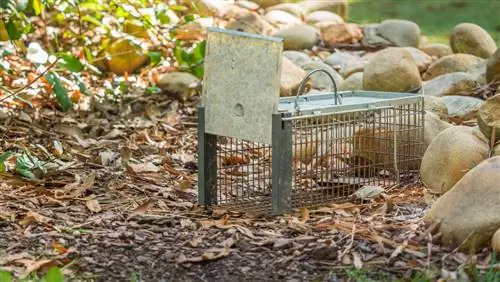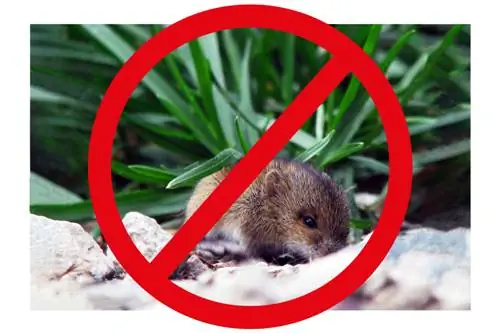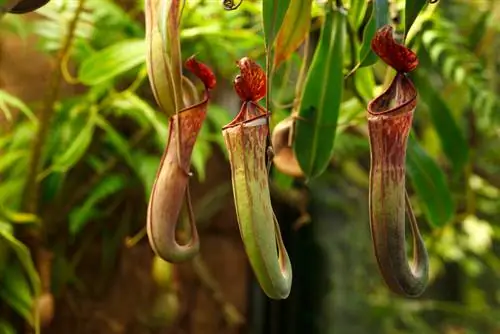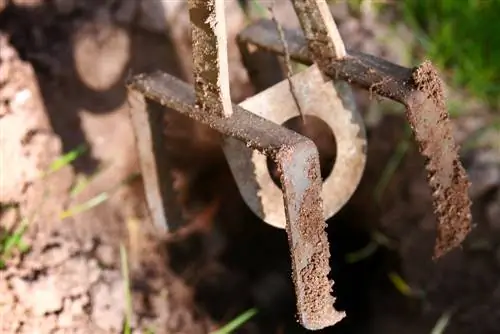- Author admin [email protected].
- Public 2023-12-16 16:46.
- Last modified 2025-01-23 11:22.
The arum has an unusual flower. This consists of a bract and a flower spadix. The plant then forms a trap for insects to pollinate.
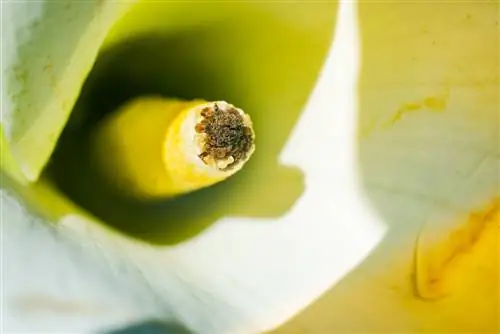
How is the arum pollinated?
The flower of the arumemits scents that are reminiscent of feces. This attracts insects for pollination. Due to the flower sheath consisting of bract and spadix, the flower functions like a cauldron trap, trapping the insects until pollination occurs.
How does the cauldron trap work on the arum?
If insects touch the bulb or bract of the arum, they slide into the interior of the flower. Both parts of the flower are therefore coated with an oil. Trap-like structures inside the flower ensure that the insects do not fly out again. If there is pollen on the insects, the female flowers in the cauldron are pollinated.
What happens after pollination?
As the night progresses, the male anthers explode. The insects caught inside the kettle trap are dusted with it. After pollination, the bract becomes limp and the traps begin to wilt. This allows the insects to escape from the flower in the early morning hours. The pollinated flowers produce fruit stalks with orange to red clusters.
Tip
The poisonous fruits
The red berries of the arum look tempting to children and some animals. Unfortunately, these are just as poisonous as the rest of the plant. The berries can also irritate the skin just by touching them. Therefore, pay attention to children and animals.


